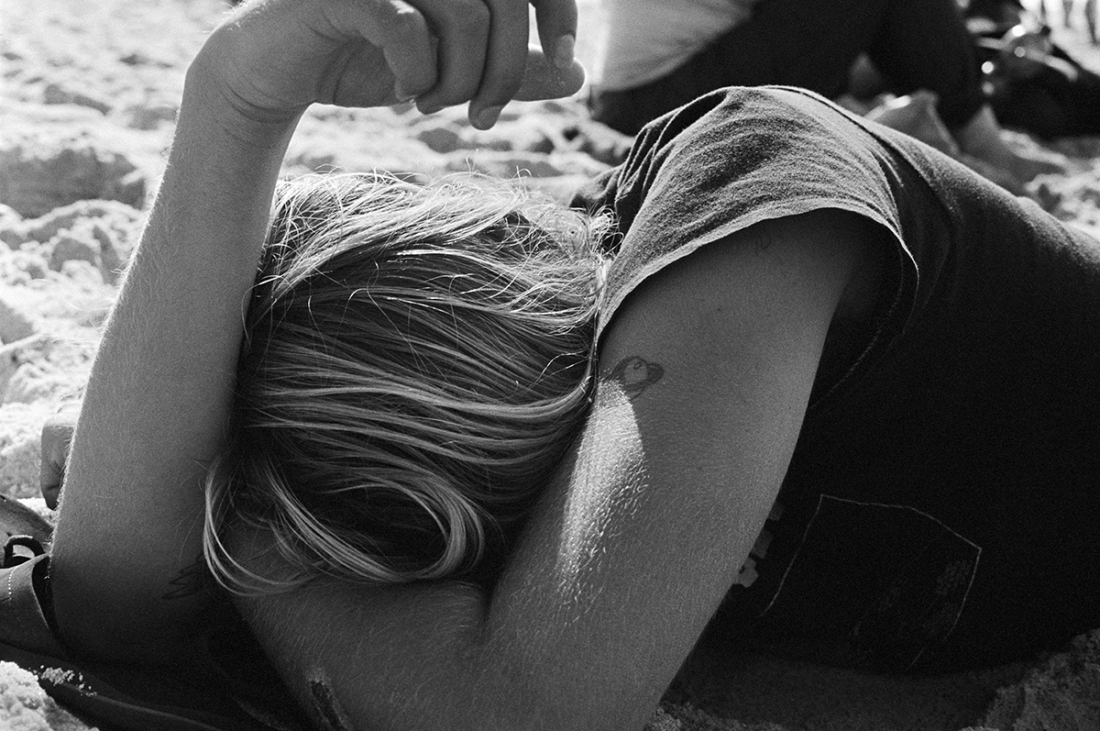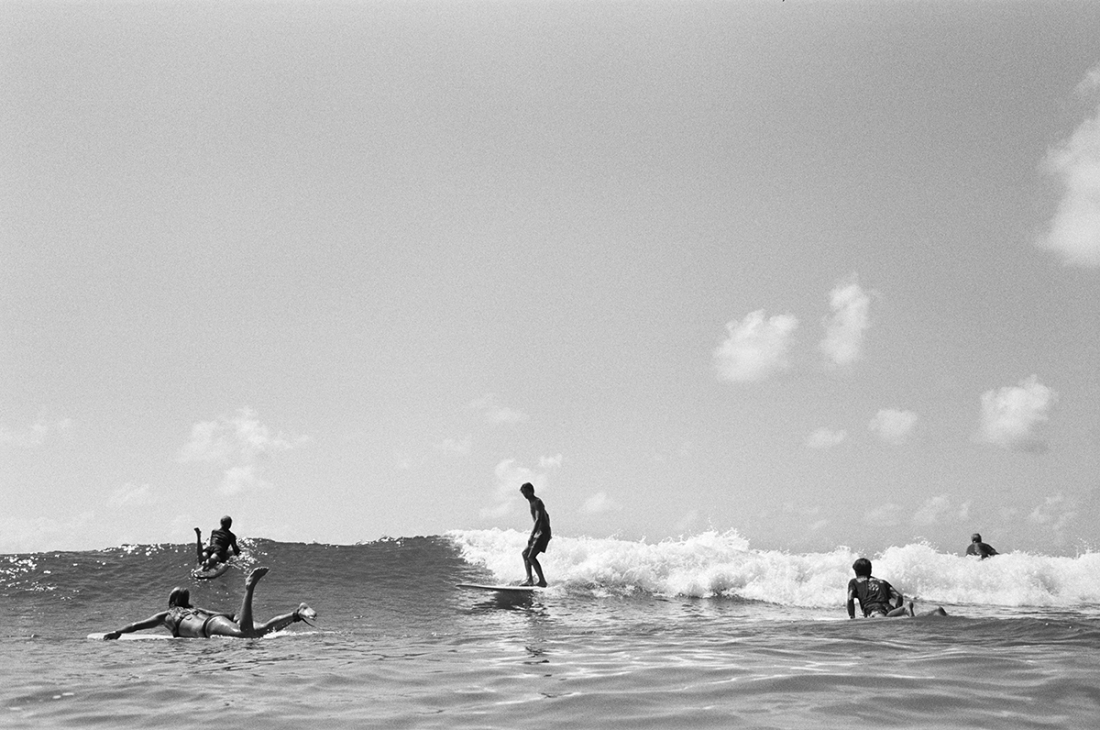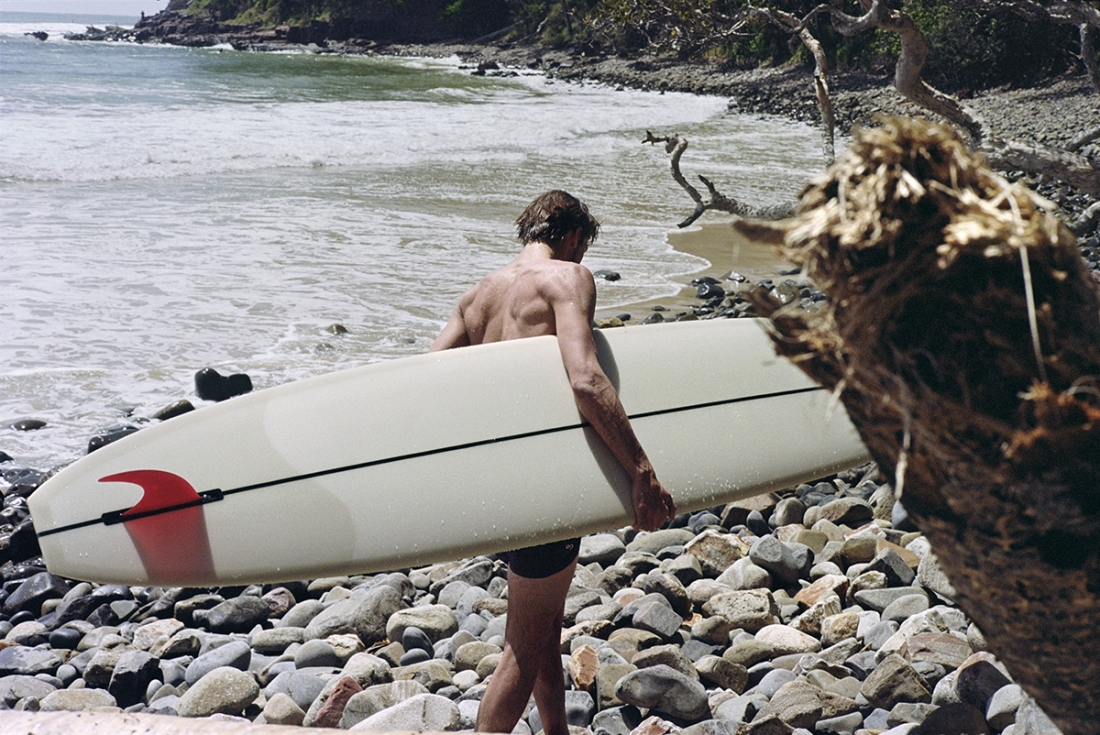Costa Mesa, California isn’t necessarily a place where you would find a conceptual art center. Typically, you’d find miles and miles of industrial centers of commerce, nondescript retail hubs, shopping malls and franchises. Under the Southern California sun, Costa Mesa is more a setting for a novel about a society on the verge of a postmodern existential crisis. But within this crisis, you’ll find a bit of catharsis with the brand new Costa Mesa Conceptual Art Center. Founded by surfer, surf historian, artist and musician Alex Knost, who recently came out with a collaborative album with Sonic Youth's Kim Gordon, and curator Daniella Murphy, the CMCAC is a small haven for creativity in a wide strangulating vortex of urban commercialism. Located on a boulevard that looks like a hundred other boulevards – about an hour from Downtown Los Angeles – the CMCAC is conceptual in and of itself. It is not a large fancy art complex with multimillion-dollar donations and starchitect design – it is a simple storage facility acting as a gallery and a launching pad for local artists and musicians. The first artist to show at the space is Justin Adams – his exhibition, Dancing Baby, is on view now. Autre got a chance to catch up with Murphy and Knost to discuss their art center and what it means to the art world as a whole.
Douglas Neill: What was the impetus for opening the Costa Mesa Conceptual Art Center with the work of Justin Adams?
Daniella Murphy: Justin lives in Alex Knost’s garage, informally. He made a spate of paintings in a really short amount of time. Alex came back from tour and Justin had made a ton of paintings, the bulk of which you see here. I think that’s how it came together. We saw what he had made and we prompted him to let us show it.
Neill: Is Justin’s process part of what interested you in showcasing his work?
Alex Knost: Justin’s process is more or less constantly participating in deconstruction. As far as being an artist who showcases his work, that’s not really him. Most of these paintings were produced in steps. All over the place…on the bed, on the ground. He’d just always be in there, tinkering about. It wasn’t really something that he presented to us at all. It was more us prying and taking away the blankets and tee shirts that were covering all the work he had been making over the six months or so and actually looking at each other and being informally persuaded on our own recognition. I think we’re still talking him into it. He’s generally quite uncomfortable.
Murphy: We had to draw it out of him. The prime artistic act, that’s what he is.
Neill: It looks like he really digs in...using his hands.
Murphy: He uses paintbrushes and his hands and whatever he has. A lot of these canvases were found. One of the works is actually part of his car.
Neill: Lots of emotion.
Murphy: It’s definitely an outlet for him, an emotional outlet.
Neill: How did you guys come together to start the Costa Mesa Conceptual Art Center?
Murphy: We kind of talked about it and yeah I went to school and studied art and I used to manage a space in San Francisco that was similar in that I facilitate people’s shows coming together. Whether it be someone asking to show at a particular space, never really soliciting artists, just kind of helping people.
Neill: Connecting people.
Murphy: Yeah, at Adobe Books in San Francisco. It’s nice working with people who aren’t established and Alex was kind of keenly interested in my background, thought it was interesting and a different perspective.
Neill: Did you two meet there?
Murphy: No, we met down here actually, in LA.
Knost: My artistic background is in creating my own body of work, which at times is a tug of war because it’s hard to promote something that you create on your own. With Daniella’s knowledge of art and being selfless towards it...I thought it was charming that Daniella’s resume was in art appreciation. It created a platform. She works in LA.
Murphy: I work at a space that’s a residency and exhibition space. It’s a non profit called Fahrenheit and it’s sponsored by the FLAX Foundation which is a French foundation that facilitates French artists coming to LA and having a cultural exchange and introducing French artists in the LA context. But moving away from that, being here now more so than in LA, there’s this palpable feel here. There aren’t that many art spaces like in Orange County or this direct environment.
Neill: For better or worse there’s a lot of art aimed at tourists and the real housewives in Orange County.
Murphy: We like to see these works insinuating themselves in those homes though.
Knost: In any creative sense, I feel artists or musicians or people that are striving to create art, there’s a heart and a vibe, there’s the original area where they started and then where they’ve gravitated towards. It’s getting harder and harder for artists who solely want to create and not have to work at a café or bank off their inheritance or whatever they got, to live in places like Los Angeles and New York or San Francisco. It’s so expensive.
Murphy: As it always has been. It’s nice to have this space here, as opposed to LA.
Neill: What makes Costa Mesa the place?
Knost: From my perspective, my way of romanticizing it is we came here because this is where I grew up. I always thought of it as this bleak flat mesa in which a lot of people, since the 70s and even more so in my generation, have been great artists, musicians, who have solely been able to abide by their own facilities because there’s a lot of industrial buildings. There’s a large Latino community and they’re not as uptight and then there’s this sharp contrast with Newport Beach where it’s very consumer. You’ve had a lot of these artists and musicians residing here out of affordability and it’s always kind of seemed more of a comfortable habitat rather than a stepping stone or pedestal or something in order to grasp for vantage to be in Hollywood or something like that. It’s much more feasible.
Neill: A different headspace.
Murphy: It’s also as if socializing is a curator and artist’s metabolism. You have to go out and make those connections. So we’re trying to facilitate those connections down here. This space will hopefully be generative of it. Not just with this show, this space will be for other kinds of projects as well.
Neill: Will CMCAC be primarily visual art or will there be music or performance?
Murphy: There’ll be performance and installations. When I walk into a space I just always want something experiential. You know something affecting, not necessarily nice art on the wall.
Knost: I believe that in calling it the Costa Mesa Conceptual Art Center is that, although you can look at this body of work and regard it as a decorative or abstract expressionism or anything like that, this environment becomes valuable. Justin’s work, for example, it’s very much an excruciating manifest. It’s not as if he’s a type of fellow that would go here or schmooze there to gain his repertoire. I think that in having him present his body of work as the first show is a flag in recognizing that something conceptual is obviously the thought process taking the precedent or the state of being and I think it’s very well exemplified in his work.
Neill: Is there an ultimate goal for the space? Do you want to expand it or take it as it goes?
Knost: I think the content of what passes through here obviously will amount to much more and spread its tentacles, but as far as expansion, it’s a humble environment. It isn’t as much of a progressive capitalist type thing. That’s why we called it a center, as to kind of make it communal and never ending expansion. Not ‘here’s our ceiling, here’s our goal, here’s this acute area in which to achieve.’
Neill: Would you ever display your own work?
Knost: Of course. The refreshing thing about doing something like this is that you’re watching all the pieces fall and being at ease with that.
Neill: Do you have roles when you’re working together?
Murphy: It’s definitely collaborative. It’s not the most formal of spaces, but it’s true to Alex’s ethos and he’s generously allowed me to partake. It’s fluid. As far as decisions with the show here, we’ll both have a say, we’ll both contribute.
Knost: We’re very open, very lax, very non-appointed. I think maybe in the first year of developing galleries and exhibition spaces, it’s always a push and pull thing. It’s usually quite aggressive, as if there are chiefs that appoint Indians that can take credit and vice versa. You know, a lot of hunter-gatherers doing so strictly to have a resume. Where as here, between Daniella and me, with the artists or musicians, poets or writers, the people that want to showcase their work, there’s more of a general consensus.
Murphy: It’s based on aesthetic considerations, of course. We have a lot of friends who make work who we won’t show here.
Knost: We’re not scratching people’s backs. That’s not our goal. There has to be something present in it that we find circumstantial.
Neill: Has surfing influenced how you perceive art and how the creative process?
Knost: Of course, it’s an existential struggle. In surfing, there’s a balance of greed between this macho hunting for waves, outsmarting the other population, but then there’s also the embarrassment. I feel that great artists are willing to obtain greatness from despair and the complications that arise from that. In that sense, you realize that sometimes a stride can be an embarrassing one…at most a very human one. I believe that art that I find intriguing has its faults.
Neill: How did you and Kim Gordon meet/come to create together?
Knost: We had mutual friends...one gal who sells and shows her art, her husband is a filmmaker who I know. One of the groups that I’m in, performed for his after party for one of his films in New York maybe two years ago. I met her at the event, we played pool. She was working on her body of work, but needed fiberglass. I work with fiberglass, so I eventually assisted her on some works for a show she had coming up. Along the line, her being a musician, we had some free time and we ended up recording and making that record [Glitterbust] and she went on to have her show and it was great to be a part of that. The record was something that I believe we’re both quite proud of.
Justin Adams' exhibition Dancing Baby will be on view until December 17, 2016 at The Costa Mesa Conceptual Art Center, 930 Placentia Blvd unit B3 Costa Mesa, CA. text and photographs by Douglas Neill. Follow Autre on Instagram: @AUTREMAGAZINE




